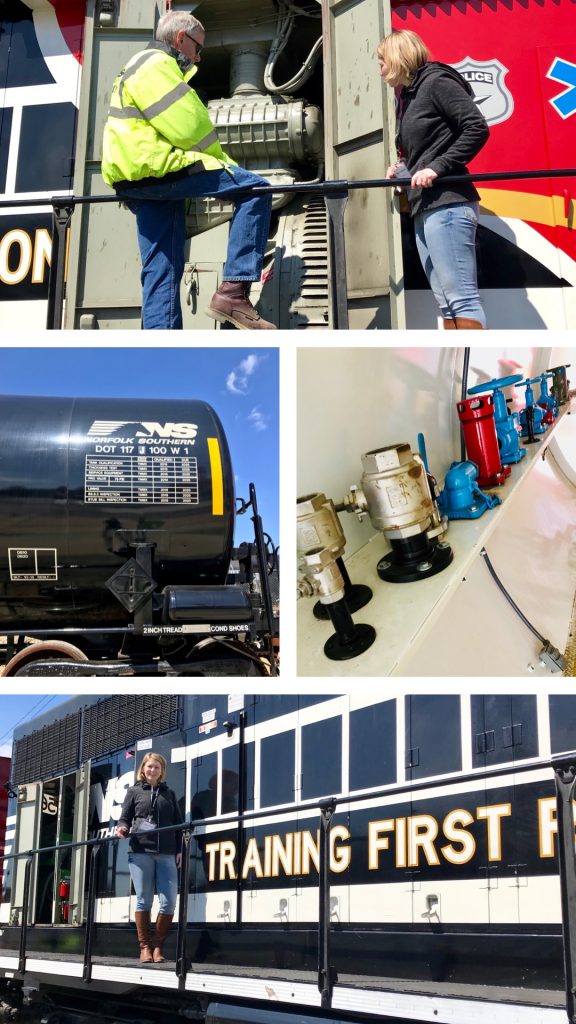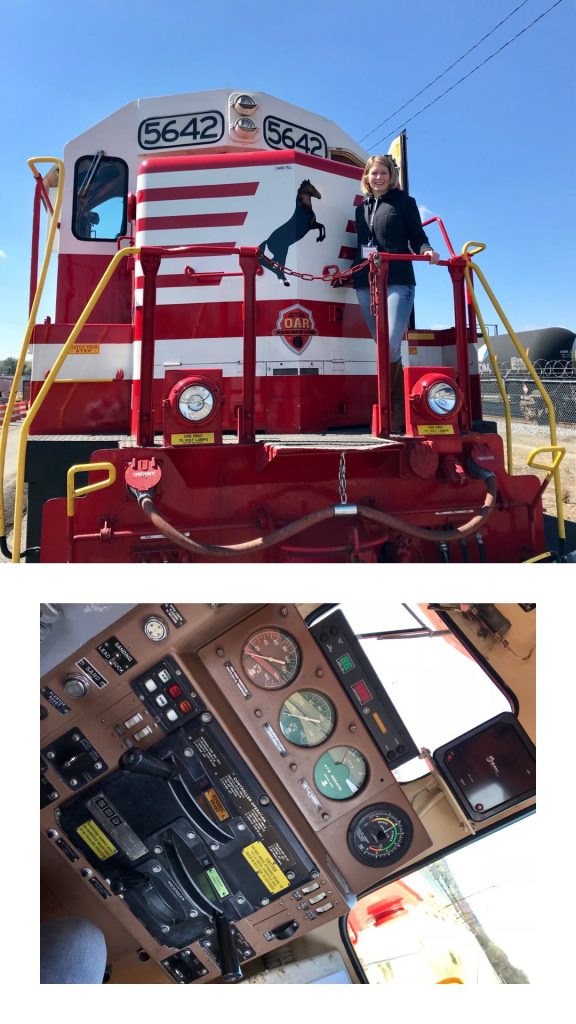Alexandria, VA — Norfolk Southern’s annual Hazmat Safety Train made its 2019 debut on a bright, crisp morning in Alexandria, Va., on Tuesday — and I was lucky to get an up-close look at the impressive training operation.

Now in its fourth year, the safety train is a rolling classroom designed to prepare local first responders for a rail safety emergency with hands-on experience. Before it wraps up in November, the train will visit 23 cities across 14 states, stopping for three days in each place to connect with a range of responders, from fire departments and law enforcement to military and homeland security personnel.
As Paul Williams — the Norfolk Southern Regional Manager for hazardous materials — walked me through the safety train, demonstrating the different valves and top fittings that first responders can practice with, I was struck by the value of that direct training experience. While hazmat accidents are extremely rare (over 99.99% of hazmat moved by rail reaches its destination without a release), knowledge and practice are key in any response situation.
That’s why the safety train curriculum covers a range of topics, from the basics (safety on railroad property, working with railroad officials, and rail equipment identification) to the more complex (flammable liquid unit trains, locomotive fires, and incident response procedures).
The AskRail mobile application, a critical tool launched by all North American Class I railroads in 2014, is also baked into each of these trainings. The app provides first responders with access to real-time, accurate information about the contents of a railcar in the event of an emergency, thus giving them the ability to make informed decisions about how to respond.
Next stop on the tour was a demonstration and discussion of the tank car enhancements enshrined in the Fixing America’s Surface Transportation (FAST) Act, passed by Congress in 2015.
Using sample tank car slices with the old and new standards (DOT-111 vs DOT-117), Chief Engineer A.D. McKisic of Trinity Rail highlighted what the tougher FAST Act standards look like and what they mean for first responders. Added thermal blanket protection, for instance, can help the tank car withstand a 100-minute pool fire, giving first responders additional response time. The DOT-117’s thicker steel jacket (9/16 in. vs 7/16 in. for DOT-111s) and protected top fittings also help to protect the tank shell from puncture during an incident (here’s a diagram from from the Railway Supply Institute’s Tank Car Resource Center).
Of course, the tour wouldn’t be complete without a visit to the crown jewel of the safety train, the NS 9-1-1 First Responders locomotive. Featuring a gleaming red, white and gold paint job — as well as the Maltese cross of fire services, the Police shield and the Emergency Medical Services’ “Star of Life” — the locomotive has visited every state in Norfolk Southern’s 22-state system over the last several years, spreading the safety message.
Across this tour and my experience in railroading, I’m continually impressed by the industry-wide, deeply-held commitment to safety. Whether Norfolk Southern or another Class I railroad (the CSX safety train also stopped in Ocala, Fl., for the week), safety is not a buzzword but rather a first-order pledge to the communities that railroads travel through.
After climbing up NS 9-1-1 — and remembering my safety briefing instructions to “maintain three point of contact at all times” — I had the chance to sit in the engineer’s seat and get a feel for what it’s like to drive the Iron Horse. The view was pretty good.



